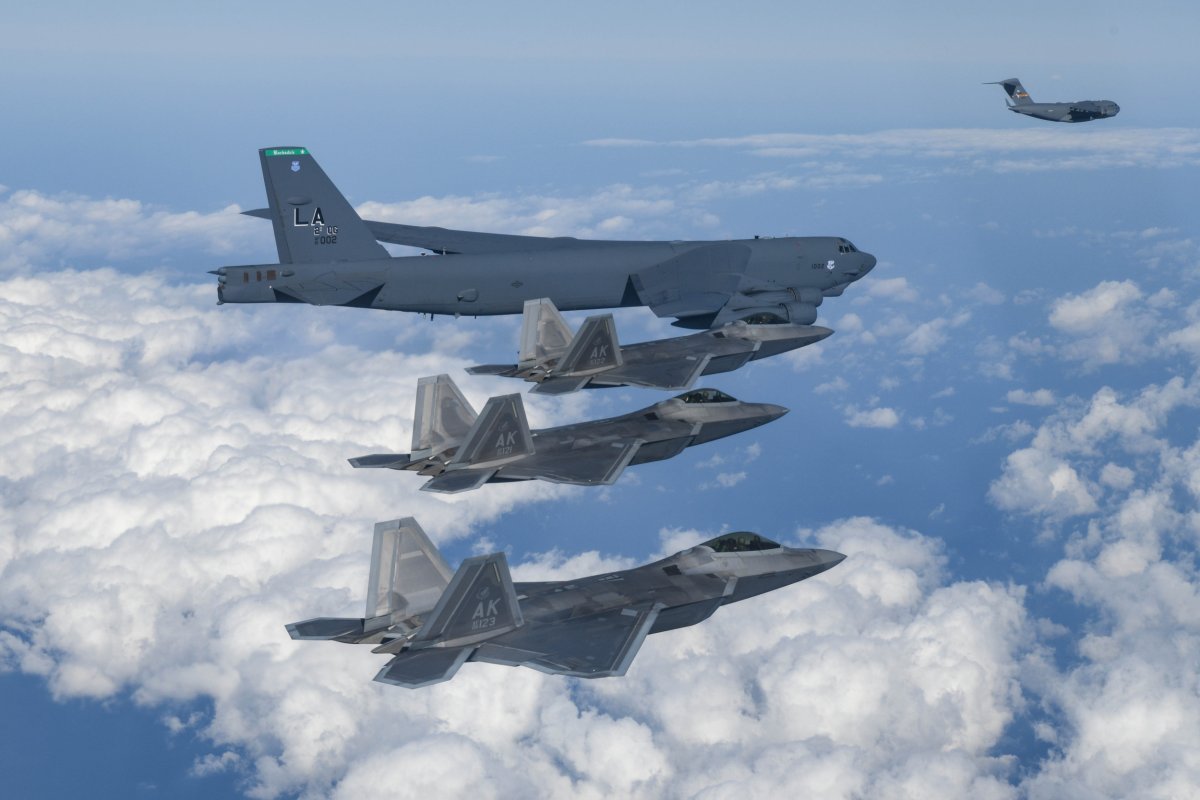The United States Air Force conducted its second strategic bomber flight over the Middle East in 48 hours amid escalating tensions around the Iranian nuclear programme, signaling U.S. determination in the area.
B-52 Stratofortress aircraft operated from Royal Air Force Base Fairford (UK) in the recent deployment. The heavy bombers were flown over the Middle East by six nations aligned to the United States and accompanied by fighter escorts of at least one country.CENTCOM).
What these bomber flights mean
This strategic bomber’s presence is at a crucial time, when the U.S. wants to stop Iran from advancing its uranium-enrichment program. This display of force is meant to remind the Iranians of U.S. power in the area and serve as a warning. By doing so, it could act as a dissuasion. CENTCOM also announced this on X.
CENTCOM Conducted a second Bomber Task Force mission in just two Days
For the second time within 48 hours, U.S. Central Command (CENTCOM) conducted another Bomber Task Force Mission in the Middle East, Feb. 20, demonstrating force projection capabilities and partner nation integration… pic.twitter.com/5BG4oaBiWU
— U.S. Central Command (@CENTCOM) February 20, 2025
Bomber Operations: What You Need to Know
Prior to the latest mission, a second pair of B-52 bombers was launched by RAF Fairford. They navigated the airspaces nine Middle Eastern nations while protected by fighter aircraft of four countries in the area. CENTCOM officials did not reveal the names of participating nations, citing reasons related to diplomatic relations.
Iran: Tensions, pressure and rising tensions
Parallel to these displays of force, tensions between Iran and Israel are escalating. Recently, statements made by the US have emphasized the need to deal with concerns regarding Iran’s behavior. This situation emphasizes the need to take a comprehensive view of regional stability.
JCPOA and Uranium Enrichment: What you need to Know
Since the U.S. withdrew from the Joint Comprehensive Plan of Action in 2018, Iran’s uranium-enrichment has increased steadily. Iran’s level of uranium enrichment was initially limited under the JCPOA or Iran nuclear agreement. Iran’s enriched uranium has increased since then. This reduces the time it would take to build a nuclear bomb, should Iran pursue this path.
Iran, according to the International Atomic Energy Agency(IAEA), is expected to have around 250 kilograms (approximately 500 pounds) of enriched U-235 by next month.

The Key Stakeholders’ Viewpoint
Statement by CENTCOM“For the third time in 48 hours, U.S. Central Command’s (CENTCOM), conducted a Bomber Task Force Mission, in the Middle East. This mission demonstrated force projection capabilities as well as partner nation integration.
Iranian Armed Forces: Perspective Major General Mohammad Bagheri: “If Iran’s security is compromised, then the whole Southwest Asian region’s safety, as well as the regional security of those who create insecurity and their allies, will also be at risk.” The interconnectedness between regional stability and security was highlighted by Bagheri.
U.S. National Security Adviser’s Perspective Waltz, in an address to Iranian leaders, stated that Iran must “give up its entire arsenal” for the relief of sanctions. [nuclear enrichment] Avoid deceptive tactics and “program”.
What Next?
U.S. Middle East allies have pushed for a stronger military and diplomatic U.S. presence in order to combat Iran’s growing influence. The recent high-level military meetings show a commitment to address regional challenges. These meetings are crucial in formulating a comprehensive plan that will ensure the stability and safety of the Middle East by collaborating and taking coordinated actions.



